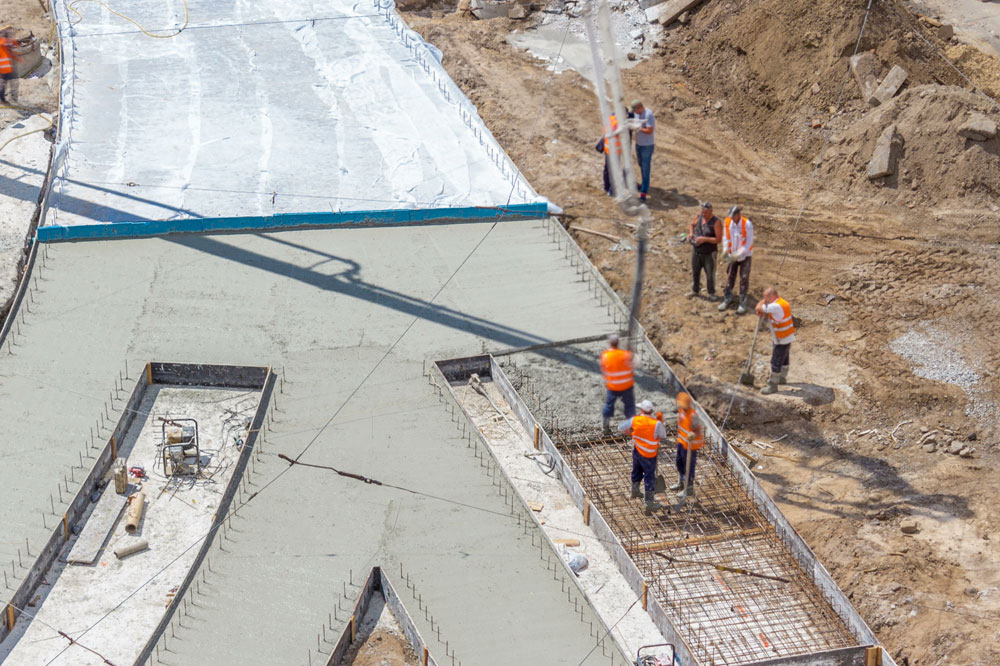For any construction site, having quality concrete services prepare your mix is key to making sure your concrete serves your construction project well. But simply getting high-quality concrete to your work site and having the right concrete placing tools won’t be enough to make sure your concrete will turn out well and last a long time. Preparing your concrete placement site properly can be the difference between concrete that ends up cracking, needing upkeep, or replacement, versus concrete that will last for decades.
Obtaining a Flat, Compacted Surface Is the First Step
The first step in getting any concrete placement site ready is getting the dirt laid out, flattened, and leveled. Smaller placement sites can make due with a hand-pushed device such as a vibrating plate compactor. Larger plots of land that will receive bigger expanses of concrete, such as a parking lot, will require a steam roller or similar vehicle to level the dirt and compact it to the point where no concrete work its way down into the dirt. The base needs to be thoroughly compacted for the concrete to remain stable and avoid cracking. You may need to add some moisture to get the dirt to compact well enough.
Laying Out and Securing Concrete Forms
You will also need to lay out wood forms around the pour site to contain the concrete and to achieve the desired shape. The measurements need to be precise, with the corners closed up tightly to avoid having concrete leak out. To reinforce your forms, apply stakes in the ground surrounding the forms roughly three feet apart, creating a solid support for your frame to avoid movement. You will want to attach the stakes to the forms using screws rather than hammering in nails. Make sure the stakes are cut flush to the top of the forms so when it comes time to screed the concrete, they won’t get in the way.
Placement of Concrete Reinforcement
If you are using a welded wire reinforcement for your concrete rather than fiber reinforcement, you will need to lay this out in preparation of your pour. The best way to keep the grid together is to tie the intersections together, making for a stronger reinforcement. Another way to make the most out of the metal grid reinforcement is to bend the rebar around corners rather than leaving the corners bare. This makes the reinforcement stronger and will prevent cracking in the corner areas.
Prop up the rebar grid using rebar chairs to make the metal grid reinforcement effective. The suspended rebar grid is what allows the reinforcement to work, so it’s crucial that the rebar doesn’t stay laying on the ground. If you are pouring next to existing concrete that will be connected, be sure to tie the reinforcements together. This can easily be done by drilling holes in the existing slab and inserting the rebar.
Consider using fiber-reinforced concrete (FRC) in lieu of welded wire reinforcement. With FRC, the fibers are added at the batch plant, ensuring uniform mixing, and are very effective in controlling cracking due to plastic shrinkage and drying shrinkage.
One you have laid a solid foundation for your concrete, you are ready to place concrete that will be strong, durable, and serve as a solid base for the rest of your project. For quality concrete services in and around South Carolina, contact Knight’s Redi-Mix today.

